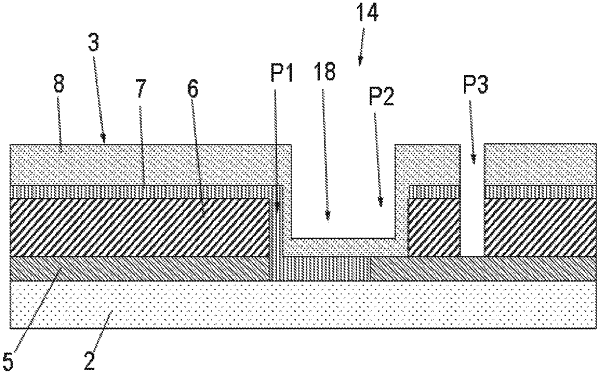| CPC H01L 31/0468 (2014.12) [H01L 31/0463 (2014.12)] | 15 Claims |

|
1. A thin-film solar module, comprising:
a substrate and a layer structure applied thereon, the layer structure comprising an opaque rear electrode layer, a front electrode layer, an absorber layer arranged between the rear electrode layer and a buffer layer, and the buffer layer arranged between the absorber layer and the front electrode layer; and
serially connected solar cells formed in the layer structure by patterning zones, each patterning zone comprising a first patterning line for subdividing at least the rear electrode layer, a second patterning line for subdividing at least the absorber layer, and at least one third patterning line for subdividing at least the front electrode layer, wherein at least one patterning zone has, in a reduced zone region reduced by the first patterning line, one or more rear-electrode layer-free optically transparent zones implemented such that the rear electrode layer is continuous in an area in the reduced zone region and is not completely subdivided by the rear electrode-free transparent zones in the reduced zone region reduced by the first patterning line, wherein the one or more optically transparent zones is filled by material of the buffer layer, wherein the buffer layer is in direct contact with the rear electrode layer.
|